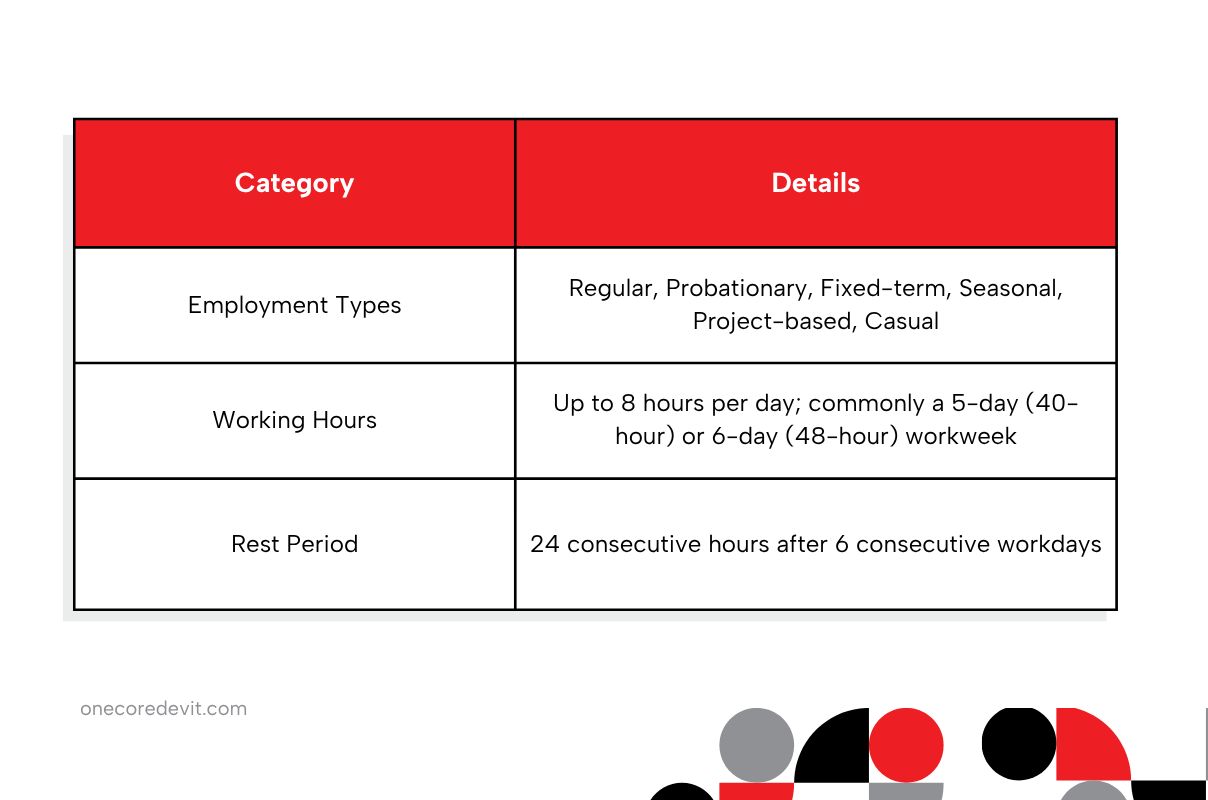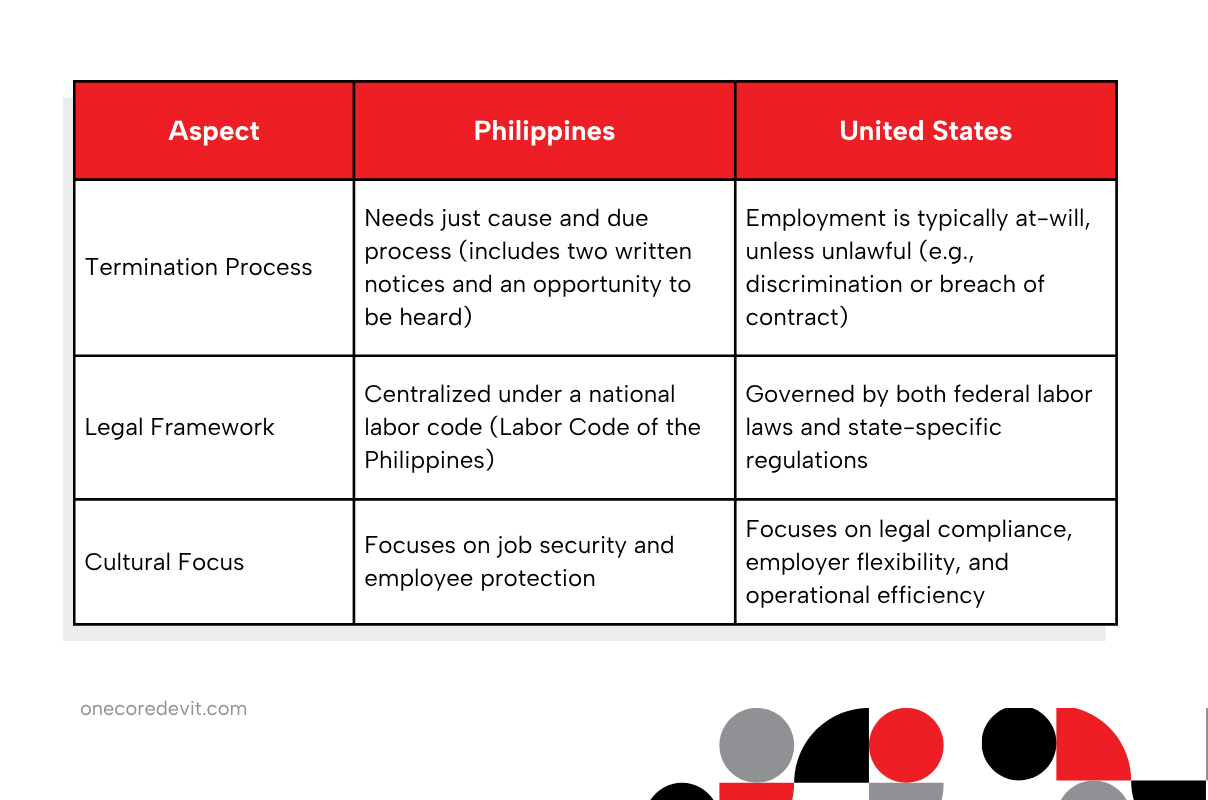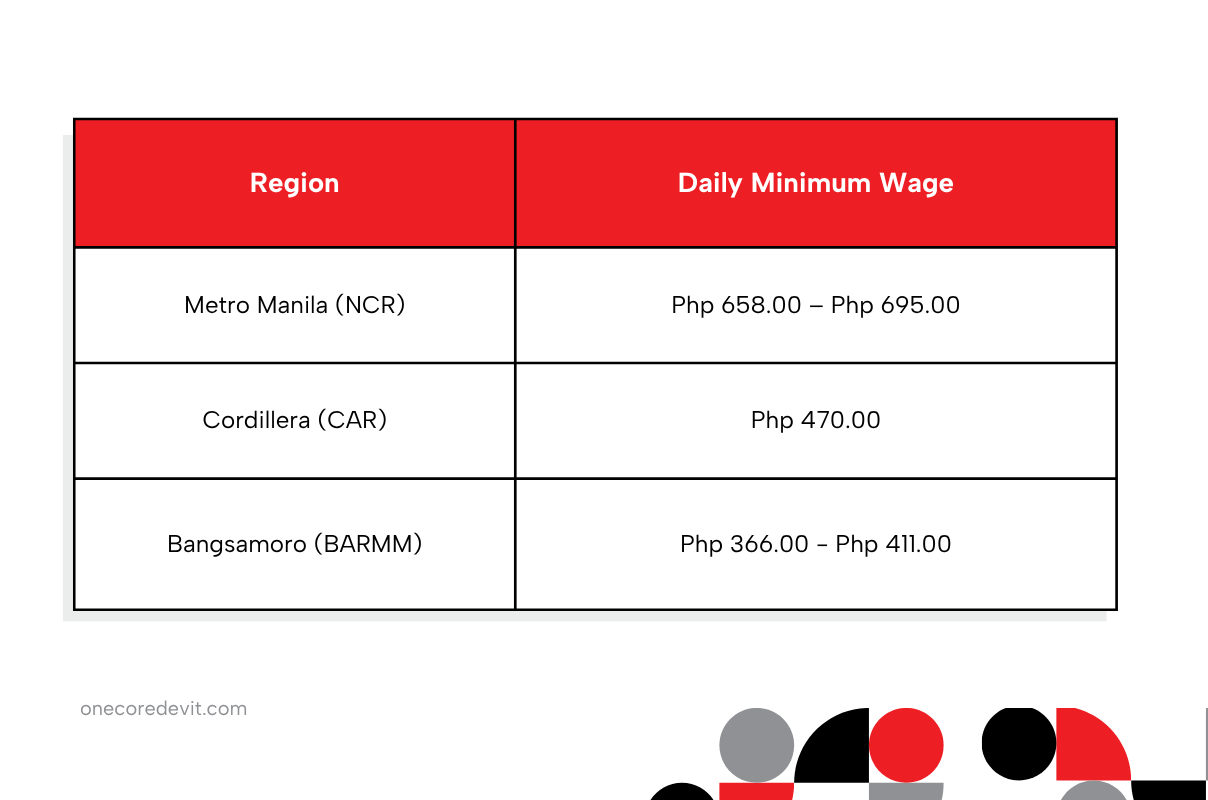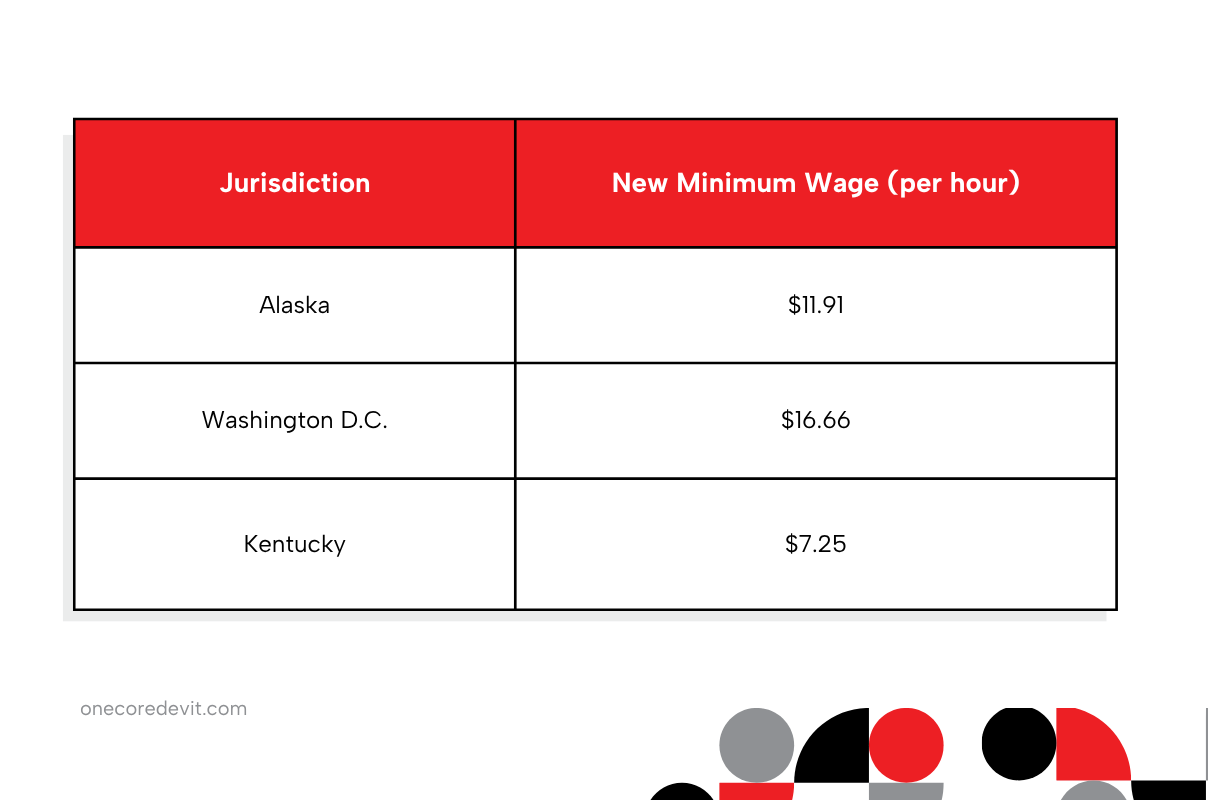Why Labor Compliance Matters in a Global Setup
Philippines labor laws are strict, and ignoring them can cost you your reputation, talent, and thousands in legal penalties. Non-compliance isn’t just a legal issue; it can disrupt your operations and weaken your global hiring strategy. It exposes you to risks like employee misclassification, benefit disputes, payroll tax issues, and improper terminations. If you’re managing teams in both the Philippines and the U.S., understanding each country’s labor rules is absolutely essential.
Outsourcing is booming. Global spending hit $971.2 billion in 2023, with the Philippines a top choice for U.S. companies. This rapid growth brings tighter scrutiny on labor compliance, especially in emerging outsourcing hubs like the Philippines. Let’s take a closer look because in global workforce management, compliance is not optional; it’s a cornerstone of sustainable hiring success.
Employment Classifications: Employee vs. Contractor
The first and biggest compliance trap for global teams is misclassification. It could cost you more than you think.
In the U.S., the Internal Revenue Service (IRS) evaluates worker classification using three key categories. These are behavioral control, financial control, and the nature of the relationship. These categories help determine whether someone is an employee or an independent contractor for tax purposes.
In 2025, the NLRB introduced stricter compliance rules that every U.S. employer should know.
Key developments include:
- More scrutiny on non-compete clauses that restrict employee mobility
- Bigger consequences for violating the National Labor Relations Act (NLRA)
- Updates to confidentiality and severance agreement standards
- Stronger protections for workers claiming employee rights
Meanwhile, under Philippines labor laws, DOLE provides clear rules for defining regular employees vs. independent contractors.
According to DOLE guidelines, contractors must:
- Work independently without employer control
- Provide and use their own tools or equipment
- Avoid being treated like regular staff
Legal Framework Comparison: U.S. vs. Philippines
Understanding the fundamental differences in legal frameworks is essential for proper outsourcing workforce management across borders.
United States (General Overview)
- At-Will Employment: Employees may be terminated anytime for legal reasons, without cause or notice, except in cases of discrimination.
- Minimal Procedural Burden: U.S. law doesn’t require hearings or written explanations, though internal documentation is considered best practice.
- Low Risk of Reinstatement: Courts rarely order reinstatement, unless terminations involve discrimination or retaliation against whistleblowers.
This flexibility allows U.S. employers wide decision-making power, but it can be confusing in countries with stricter labor protections.
Philippines
- Security of Tenure: Under Philippine labor laws, regular employees can only be dismissed for just or authorized causes under the Labor Code.
- Procedural Due Process Required: Employers must follow the two-notice rule and, in some cases, notify DOLE.
- High Legal Risk: Non-compliance may lead to reinstatement, full back wages, and possible payment of damages to the employee.
The Philippines is known for having strong employee protection laws—among the toughest in Southeast Asia, especially compared to the U.S. Many may find Philippines labor laws complex, making local HR expertise essential when building or managing teams in the Philippines.
Working Hours and Overtime Pay
Under Philippines labor laws, the normal workday is 8 hours. While many employers implement a 5-day, 40-hour workweek, the law permits up to 6 working days. This totals a maximum of 48 hours per week. Any work beyond 8 hours in a day qualifies for overtime pay. Which must be at least 125% of the regular hourly rate on regular working days.
Moreover, a night shift differential of at least 10% applies to hours worked between 10:00 PM and 6:00 AM.
As of 2025, the Philippines follows clear employment guidelines that define fair standards across all industries:

In the United States, the Fair Labor Standards Act (FLSA) sets rules for overtime pay for non-exempt hourly employees. Any hours worked beyond 40 in a week must be paid at 1.5 times the regular hourly rate. However, salaried employees may be exempt from overtime depending on their job duties and income levels.
Note: Many Filipino workers adapt to U.S. time zones, but you must follow Philippines labor laws on hours and rest.
Importance of Timely Appraisals After Probation
Under Philippines labor laws, probationary employment must not exceed six months from the employee’s start date. Once this period ends, the employee becomes regularized unless properly terminated or extended with valid justification and documentation.
Why timely appraisals matter:
- Legal Compliance: Employers must assess performance within the probationary period to justify any termination decisions.
- Avoids Deemed Regularization: Without documented evaluations and communicated standards, employees may automatically gain regular status, entitling them to full labor protections.
- Supports Workforce Quality: Early identification of underperformance allows for lawful separation without the complexities associated with terminating regular employees.
Many U.S.-based companies operating in the Philippines may overlook this critical window. This leads to challenges in terminating underperforming employees without adhering to stringent termination requirements under local law.
Setting calendar reminders by the fifth month is a simple but powerful way to stay compliant and protect your operations.
Mandatory Benefits
This is where compliance differences between countries really begin to stand out, especially when you look at Philippines labor laws.
Mandatory Benefits in the Philippines
Employers in the Philippines are legally required to provide and contribute to several mandatory employee benefits, as outlined below:
- Social Security System (SSS) – Provides benefits for sickness, maternity, disability, retirement, and death.
- PhilHealth – Covers medical and hospitalization expenses.
- Pag-IBIG Fund – Helps with savings and access to housing loans.
- 13th Month Pay – Extra one month’s salary given annually, usually in December.
Leave Benefits
Other leave benefits required under Philippines labor laws include the following:
- Maternity Leave: 105 days paid (120 days for solo parents)
- Paternity Leave: 7 days for the first 4 births
- Solo Parent Leave: 7 days of paid leave annually
- Violence-Against-Women Leave: 10 days of paid leave for abuse victims
U.S. Comparison
In the U.S., there is no legal requirement for 13th-month pay or nationwide government healthcare for private employees.
However, U.S. employers must still contribute to the following mandatory programs:
- FICA: Covers Social Security and Medicare contributions for employees
- FUTA/SUTA: Federal and state unemployment insurance requirements
Other benefits like 401(k), PTO, and health insurance are optional, depending on the employer and company policy.
Paid Time Off and Holidays
In the Philippines:
- There are around 20 holidays each year, including regular and special non-working days. Exact number may vary annually depending on official declarations and presidential proclamations.
- Employees who become regular are entitled to at least 5 days of Service Incentive Leave annually.
- If they work on a regular holiday, they may receive up to 200% of their daily wage.
In the U.S.:
- No federal law requires paid holidays or vacation leave for employees.
- Employers decide PTO policies, but most offer around 10 to 15 days of leave each year.
Philippine labor laws are more detailed and specific. An EOR can help structure leave benefits correctly and compliantly.
Proper Termination Process Under Philippines Labor Laws
Termination is a key compliance concern when managing outsourced teams under Philippine labor laws.
In the U.S., at-will employment allows employers to fire workers for any lawful reason, except for discrimination or retaliation. Meanwhile, in the Philippines, termination is strictly regulated. Employers must establish either a just cause or an authorized cause for dismissal.
Just Causes (e.g., misconduct, fraud, neglect):
- Notice to Explain (NTE): A written notice that details the charges and includes supporting documents or evidence.
- Opportunity to be Heard: Employees must respond through a written reply or attend an administrative hearing to explain their side.
- Notice of Decision: A final written notice explaining why the dismissal is justified based on facts and responses.
Authorized Causes (e.g., redundancy, retrenchment, closure):
- 30-Day Advance Notice: Employers must notify the employee and the DOLE in writing.
- Separation Pay: Employers must provide pay based on tenure, usually one month or half a month per year of service.
What Happens if Termination is Improper?
- Reinstatement: The employee may be reinstated without losing seniority or rank.
- Back Wages: Full salary from the time of dismissal until reinstatement or final decision must be paid.
- Separation Pay: If reinstatement isn’t feasible, the employee may still receive compensation.
- Nominal Damages: Courts may award typically ₱30,000 to ₱50,000 for violations of due process.
Due process must always be followed. This includes two written notices and a clear chance for the employee to respond. Failing this process may lead to legal issues, including reinstatement orders, financial penalties, and damage to company reputation.

Payroll and Remittance Schedules
In the Philippines, employees are usually paid twice a month on fixed payroll dates. Employers must withhold taxes and remit monthly contributions to SSS, PhilHealth, Pag-IBIG, and the BIR. Under Philippines labor laws, late remittances lead to penalties, surcharges, and possible compliance issues. Timely payroll and remittances are essential for legal compliance and employee trust in the workplace.
Minimum Wage Considerations
The minimum wage structure in the Philippines differs by region and is reviewed regularly by DOLE. Here are samples daily minimum wages as of July 2025:

In the U.S., payroll frequency varies, but most companies pay bi-weekly. U.S. employers must file reports with the IRS and Department of Labor, plus applicable state agencies. To manage this efficiently, many use third-party software. Minimum wage rates in the U.S. are also reviewed and updated regularly by state and local governments.
Below are some updated rates as of July 2025:

Global Compliance Tip
To stay compliant across borders, consider using a local payroll provider or global platforms. These tools help manage payroll, benefits, and tax remittances while ensuring you’re aligned with both local and international regulations.
Developing a Client-Facing Appraisal and Termination Strategy
To reduce liability and stay compliant with Philippines labor laws, use a clear structure when onboarding U.S. clients employing Filipino talent.
1. Client Education and Orientation:
- Share a side-by-side comparison of U.S. and Philippines labor laws for initial awareness.
- Emphasize security of tenure and legal risks after regularization, which differ from most U.S. employment practices.
2. Appraisal Planning:
- Require performance reviews before the 5th probationary month to assess fit and job performance.
- Use job-specific KPIs to guide evaluations and ensure fair, objective appraisal results.
- Document the review and secure the client’s signature for compliance tracking.
3. Performance Improvement Plans (PIPs):
- If underperforming, place probationary employees on a PIP to justify possible non-regularization.
- For regular staff, use a documented PIP to support possible just cause termination if no progress is made.
4. Template Policies and Documentation:
- Provide compliant templates for NTEs, PIPs, and termination notices to support proper documentation.
- Have your HR team handle issuance, tracking, and secure filing of all documents.
5. Final Pay and Separation Handling:
- Ensure last pay includes earned benefits, pro-rated 13th-month, and separation pay when required.
- Submit necessary reports to DOLE, especially for dismissals with legal consequences.
6. Dispute Risk Management:
- Keep a complete audit trail: signed evaluations, notices, emails, and attendance records.
- Recommend legal review before executing any terminations to reduce risk of exposure.
This structured approach aligns client actions with Philippines labor laws, helping minimize costly errors and supporting a smooth cross-border employment process.
Employer of Record (EOR) Requirements
Without a registered business entity in the Philippines, Philippine labor laws prohibit you from hiring employees directly. That’s why an Employer of Record in the Philippines is essential for compliant hiring and workforce management. An EOR becomes the legal employer on your behalf, managing contracts, payroll, benefits, taxes, and termination according to Philippine labor laws.
Philippines EOR Requirements
To stay compliant, EOR providers in the Philippines typically manage the following responsibilities:
- Drafting and enforcing employment contracts under Philippines labor laws
- Processing payroll every two weeks or twice a month
- Managing tax filings and contributions to SSS, PhilHealth, and Pag-IBIG
- Administering required benefits like 13th-month pay, holidays, and paid leave
- Overseeing lawful terminations and final pay according to government rules
Related post: The Impact of Hybrid Work Models on Employee Satisfaction in the Philippines

Best Practices for Managing Labor Compliance Across Borders
Now that you’ve identified legal gaps, here’s how to manage your global team compliantly, especially under Philippines labor laws.
Implement a Comprehensive Labor Compliance Program
A strong labor compliance program helps reduce legal risks across borders. It should include the following essential components:
- Conduct regular audits to identify potential labor compliance issues.
- Document all employment policies and procedures in a clear, accessible format.
- Provide ongoing training for both managers and employees on relevant labor regulations.
- Assign compliance officers to monitor and stay updated on regulatory changes.
Leverage Technology for Compliance Management
Technology plays a vital role in modern outsourcing workforce management. Consider implementing:
- Use HR software that supports labor law requirements across multiple countries, including Philippines labor laws.
- Implement time tracking systems suited for international teams and varied time zones.
- Adopt secure document management tools that protect sensitive employees and company data.
- Set up automated compliance tracking and real-time reporting dashboards.
Additional Best Practices
- Consult legal experts with experience in both U.S. and Philippines labor laws.
- Choose an EOR or BPO partner if you don’t have a legal entity in the Philippines.
- Use cloud-based HR or payroll software with international functionality.
- Maintain contracts and documents in both English and Filipino.
- Track policy updates from DOLE and U.S. DOL.
- Educate your team on cultural norms and professional etiquette in each region.
- Protect employee data through strong cross-border privacy and security protocols.
Navigating the Compliance Landscape
Understanding the differences between Philippines labor laws and US regulations is essential for successful remote team compliance. Key areas to watch include worker classification, benefits, termination policies, and enforcement mechanisms between the two countries.
By staying informed and proactive, you can avoid legal risks and align with evolving labor standards in both countries. Compliance helps prevent penalties, but more than that, it builds a stable and trustworthy employment environment for your team. When employees feel supported under Philippines labor laws, they’re more engaged, productive, and committed to long-term success.
Frequently Asked Questions (FAQs):
Q1: What are the basic labor laws in the Philippines?
The basic labor laws in the Philippines are governed by the Labor Code, which outlines employee rights, working conditions, wages, benefits, and termination procedures. It covers both employer and employee responsibilities to ensure fair and lawful employment practices.
Q2: What are the 5 basic rights of workers in the Philippines?
There are actually 8 basic rights of workers in the Philippines include:
- the right to self-organization,
- the right to collective bargaining and negotiations,
- the right to peaceful concerted activities,
- the right to strike in accordance with law,
- the right to security of tenure,
- The right to humane conditions of work,
- The right to a living wage, and
- The right to participate in policy and decision-making processes affecting their rights and benefits as may be provided by law.
These rights are protected by law to promote dignity and fairness at work.
Q3: What is the Labor Standards Act in the Philippines?
While there is no specific “Labor Standards Act,” the term refers to the provisions in the Philippine Labor Code that set minimum requirements for wages, working hours, leave benefits, and workplace conditions. It ensures that workers receive basic protections and fair treatment from employers.
Labor laws in the Philippines differ significantly from those in the U.S. and navigating them without local expertise can be risky. That’s why CORE® delivers more than surface-level support; we provide customized solutions to meet your unique workforce needs. We ensure compliance, reduce admin load, and help your business stay agile and secure. Partner with us today!





